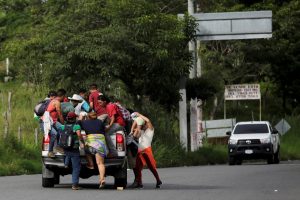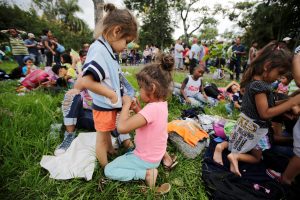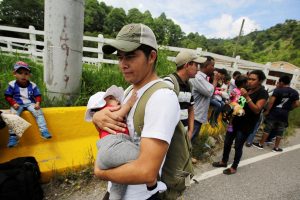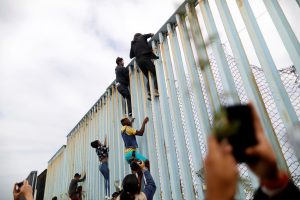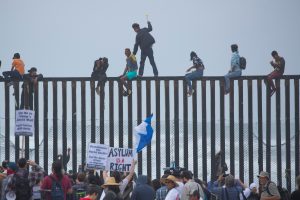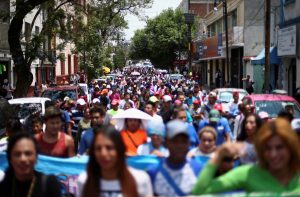
By Daina Beth Solomon and Delphine Schrank
MEXICO CITY/CIUDAD HIDALGO, Mexico (Reuters) – Mexico’s government on Friday vowed to meet the challenge of a caravan of Central American migrants heading north that has angered U.S. President Donald Trump, who threatened to shut down the U.S-Mexico border to halt its passage.
Mexican Foreign Minister Luis Videgaray and U.S. Secretary of State Mike Pompeo met in Mexico City and discussed the caravan of several thousand people, which set off from Honduras last weekend, and is now at Mexico’s border with Guatemala.
“It’s a challenge that Mexico is facing, and that’s how I expressed it to Secretary Pompeo,” Videgaray told a news conference alongside his U.S. counterpart.
On Friday afternoon, hundreds of the migrants poured through Guatemala’s frontier posts toward the closed Mexican border on a bridge spanning the Suchiate River that bisects the two countries, Mexican television footage showed.
Mexico’s government has sought assistance from the United Nations High Commissioner for Refugees (UNHCR) to help process migrants claiming refugee status at the border, which could allow it to disperse the train of people and placate Trump.
Pompeo said he and Videgaray spoke of the importance of stopping the caravan before it reaches the U.S. border. Pompeo thanked Mexico for its efforts to address the migrant flow, including calling in the United Nations for assistance.
Several thousand Honduran migrants seeking to escape violence and poverty moved through Guatemala on the way to Mexico, with some hoping to enter the United States.
Earlier on Friday, Videgaray said the caravan had close to 4,000 people and that the migrants could individually present their claims to enter Mexico or seek refugee status.
“We haven’t had a caravan or group of this size seeking refuge at the same time, that’s why we’ve sought the support of the United Nations,” Videgaray told Mexican television.
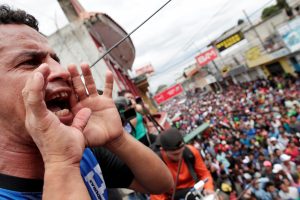
A Honduran migrant, part of a caravan trying to reach the U.S., yells as others wait to cross into Mexico, in Tecun Uman, Guatemala October 19, 2018. REUTERS/Ueslei Marcelino
POLICE ON BORDER
Dozens of police in riot gear were deployed along the river bank in the town of Ciudad Hidalgo on Mexico’s border with Guatemala as hundreds of migrants prepared to cross over from the Guatemalan town of Tecun Uman on the other side.
Mexico says the migrants will be processed and that those without a legitimate case to travel onwards or stay in Mexico will be returned to their countries of origin.
UNHCR spokesman Charlie Yaxley said the agency is reinforcing capacity in southern Mexico to offer counseling, legal assistance and humanitarian aid to asylum-seekers.
“UNHCR is concerned that the mobilization of such a large number of people in a single group will overwhelm the capacities that exist in the region,” he told a news conference.
A caravan of Central Americans that formed in southern Mexico in late March also drew the ire of Trump, who on Thursday threatened to deploy the military and close the southern U.S. border if Mexico did not halt the latest procession.
Such a move by Trump would cause chaos on the border, one of the world’s busiest, and badly disrupt trade.
However, by the end of Thursday, the U.S. president was also thanking Mexico for its efforts to contain the caravan.
In contrast to the earlier caravan, which moved deeper into the interior of Mexico before officials began intensive efforts to process the migrants, the Mexican government has focused on the new group right on its southern border with Guatemala.
(Reporting by Veronica Gomez, Julia Love and Daina Beth Solomon in Mexico City; Additional reporting by Delphine Schrank in Ciudad Hidalgo and Tom Miles in Geneva and Edgard Garrido in Tecun Uman; Writing by Dave Graham; Editing by Alistair Bell)




